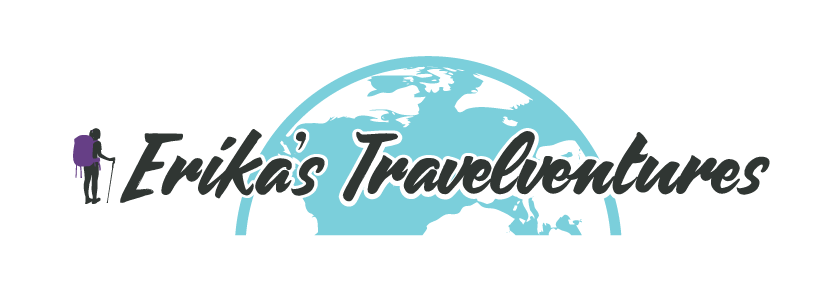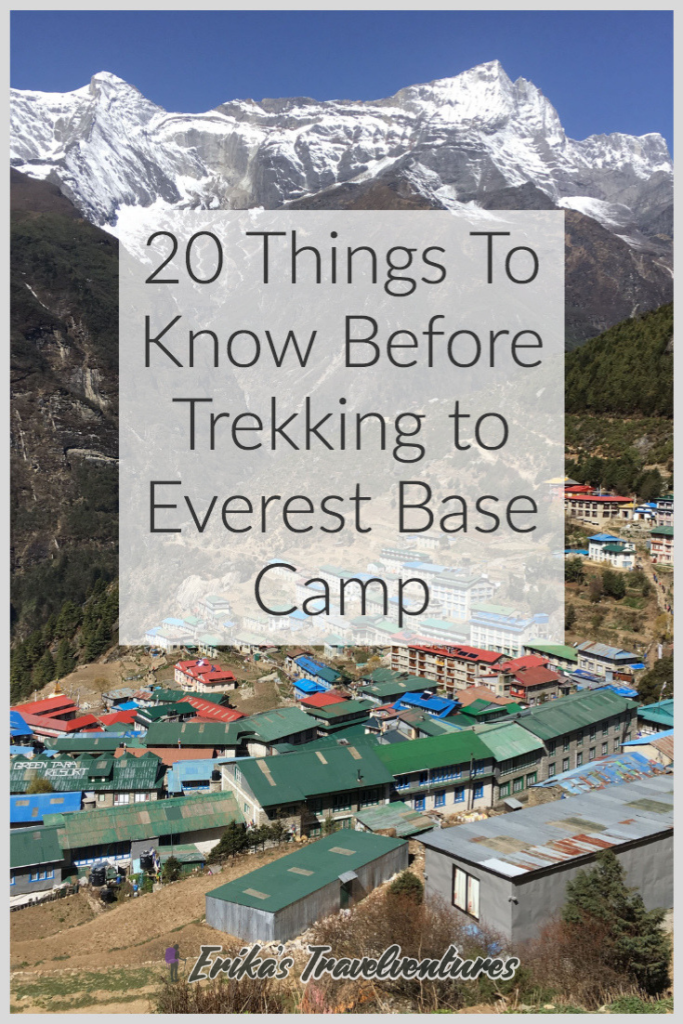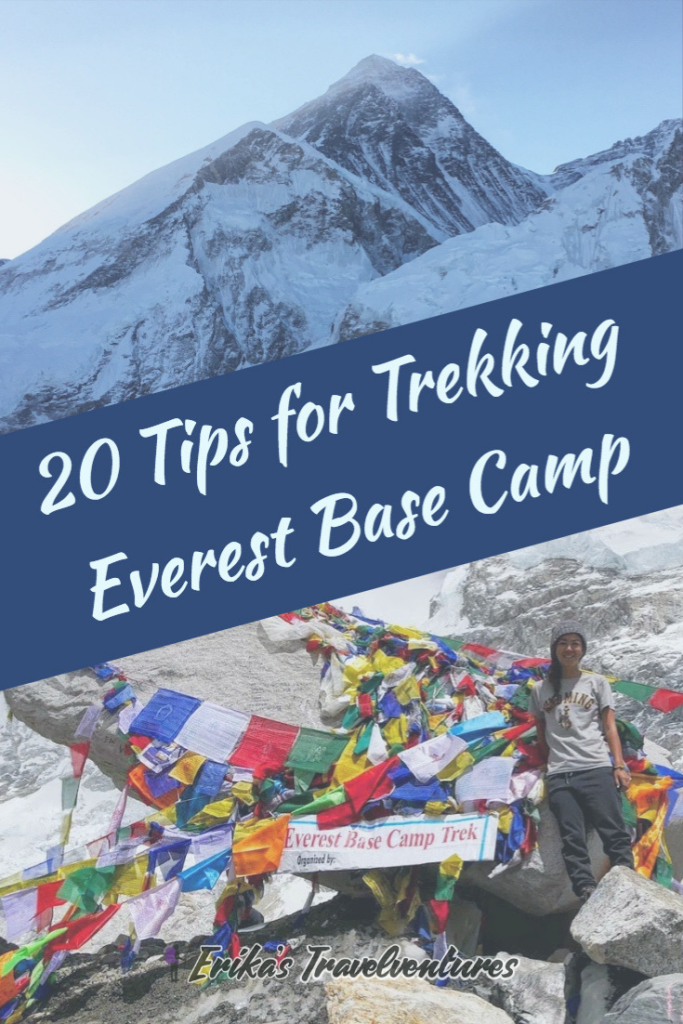Trekking to Everest Base Camp (EBC) is a common bucket list item for trekkers and non-trekkers alike. When you’re planning a trip to the top of the world there are many things you should know before hiking Everest Base Camp from safety, packing lists, and getting to/from the Everest Region. I suggest reading up on as many tips for hiking to Everest Base Camp as possible!
The more prepared you are, the higher your chances are of reaching EBC! Here’s a list of 20 things you should know before trekking to Everest Base Camp, to make sure your trip is safe and successful.
Hiking to Everest Base Camp: Logistics
1. How To Reach The Start Of The Trek
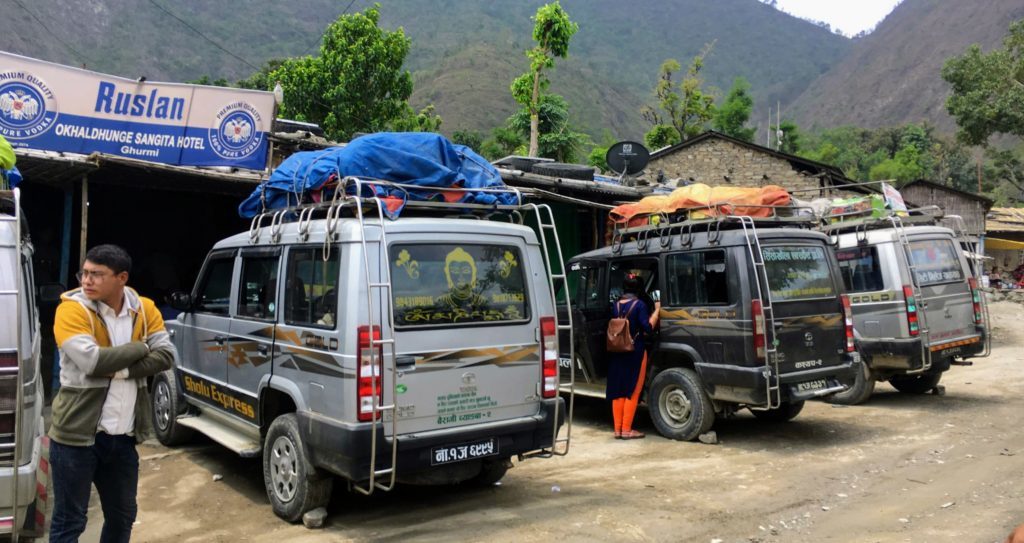
Getting to the Everest region is a little bit more difficult than the Annapurna region. One thing to know before trekking to Everest Base Camp is that there are three different ways that you can reach the Everest trekking region from Kathmandu.
Method 1: Fly to Lukla
The first method is the most popular: Fly 45 mins from Kathmandu to Lukla for ~$340 round trip. One important thing to know before hiking to Everest Base Camp: Flights to Lukla are often cancelled without notice due to poor weather and visibility. Take into account during your trip-planning that you may have to spend an extra day or two in Kathmandu just trying to get to the mountains.
Method 2: Jeep to Salleri (adds 3 days)
The second method to get to the Everest Base Camp region is taking a 10-hour jeep ride from Kathmandu to Salleri, a town that’s 3 days walking distance from Lukla. Before hiking to Everest Base Camp and the Three Passes Trek, I didn’t know this method existed! The cost for a seat in the jeep costs $20 from Kathmandu, and the return trip only cost $14.
Method 3: Bus to Jiri (adds 6 days)
The third method is taking a 8-to-10-hour bus from Kathmandu to Jiri, which is 6 days walking distance from Lukla. The cost for a bus is only slightly less than the jeep, but Jiri is where hikers traditionally started their treks up to Everest before the airport was built.
2. Best Time Of The Year To Trek
The best time to trek Everest Base Camp is during the trekking ‘high season’ in Nepal, between October-November, and March-May. These are the months in the year where visibility is clearest, there’s a low chance of rain, and it’s not too cold (relatively) in the mountains.
October-November is the most crowded months for casual trekkers, but May is when most of the Everest ascents take place. Hiking to EBC outside of these months means too much rain or too much snow.
3. How To Navigate The Trails on EBC
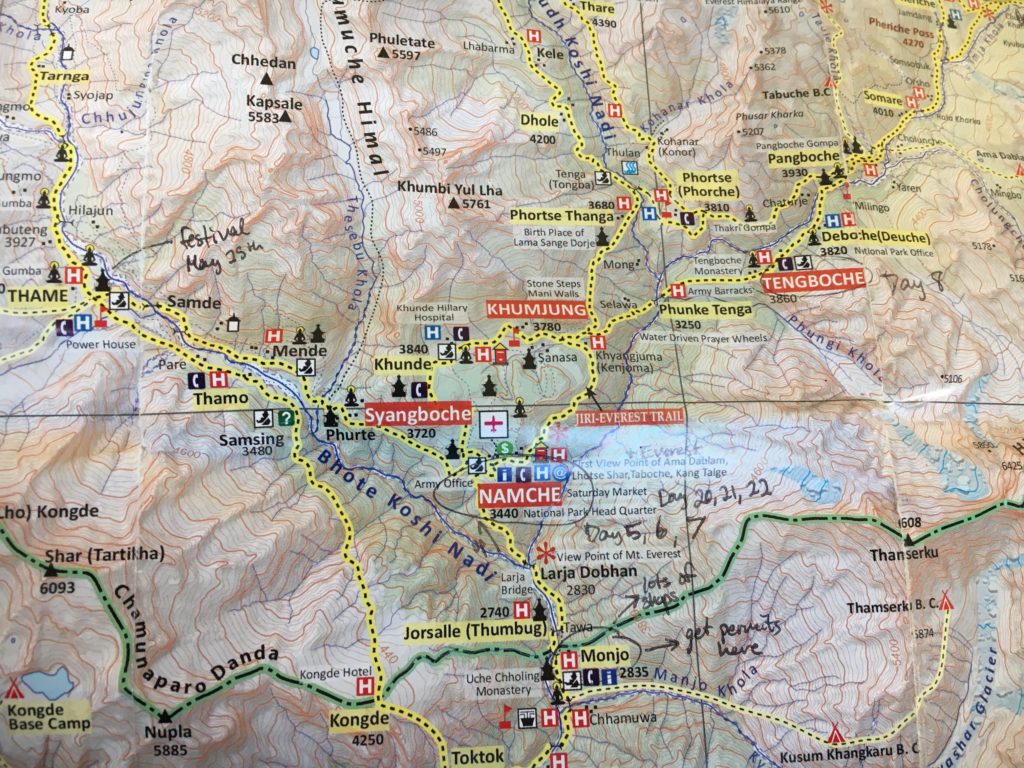
The majority of the trails on the Everest Base Camp hike are wide, well-marked, and obvious. With the many organized tour groups sharing the trail with you, it’s not hard to figure out where the trail goes next.
That being said, I still thought it was helpful to carry a paper map in some sections of EBC. I also used the application maps.me to navigate, which has accurate trail maps for the region. If you’re concerned about getting lost, hike EBC so there’s always someone in front of you or behind you.
4. Permits To Buy for Hiking EBC
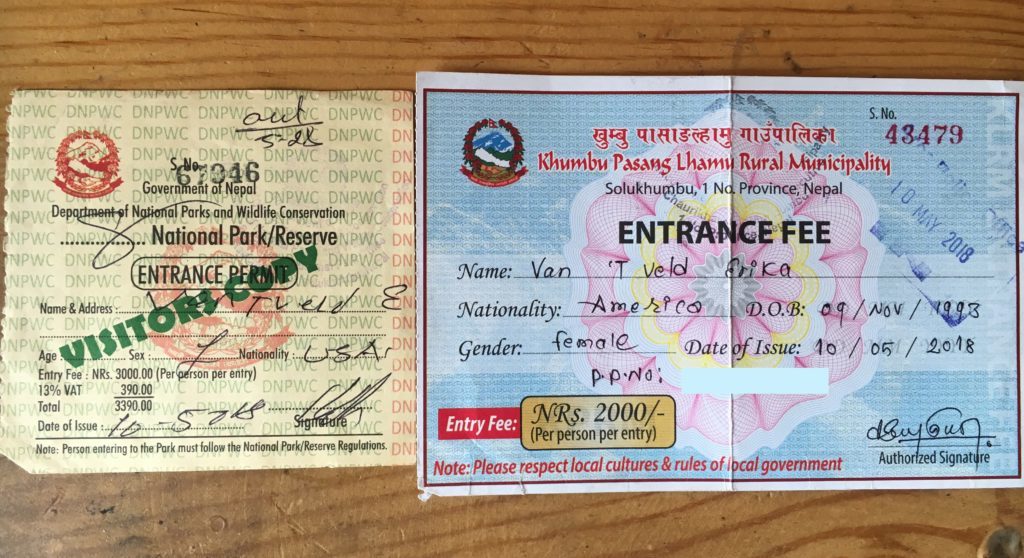
Both permits necessary to trek to Everest Base Camp can be bought on the trek itself.
- The first permit is the Sagarmartha National Park permit, which costs 3390 rupees ($34). This can be bought in Monjo, Lukla, and Kathmandu.
- The second permit is the Khumbu Pasang Municipality trekking permit which is bought at a hut just outside of Namche Bazaar. This costs 2000 rupees ($20) and cannot be purchased in Kathmandu. A passport inspection is required when purchasing both permits.
If you plan to buy both of these permits on the trek, be sure to budget an extra 5390 rupees ($54) in your budget, and bring your passport with you!
Tips For Packing For Everest Base Camp
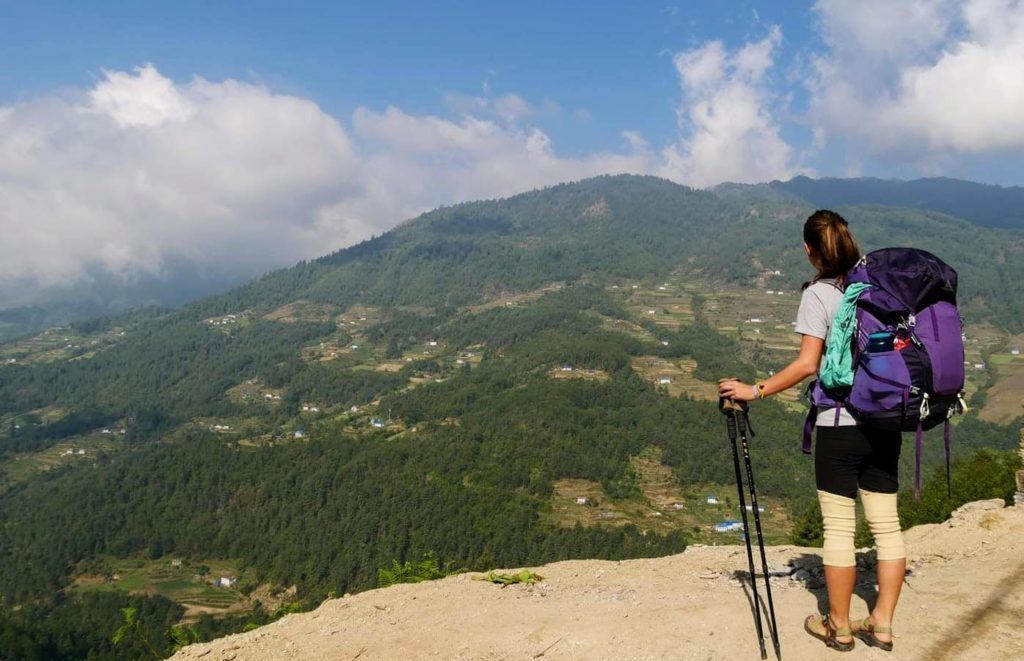
5. What To Pack for EBC Based On The Time Of The Year
Packing the right gear is a critical thing to know before hiking to Everest Base Camp. No matter what the season is, I would pack the following outerwear when trekking to EBC:
- Gore-tex (heavy) jacket
- Lightweight jacket or fleece
- Long-sleeved shirt or thermal shirt for trekking
- Sweatpants or thermal pants to trek in
- Warm trekking socks
- Hat or headband
- Thin pair of gloves
- Reusable water bottle (plus water purification tablets – see Medicines list below)
When I hiked to Everest Base Camp in May, I was glad to have brought my sleeping bag to sleep in under the blankets that are provided by the guesthouses. I did not need to bring microspikes on the EBC section of the trek (although I used them on two of the Three Passes, including Cho La between EBC and Gokyo).
In the winter months it would be necessary to bring warmer layers and more layers, including proper hiking boots to protect against the snow. A WARM sleeping bag will also help for the evenings.
In the summer (rainy season) months, it’s advisable to bring waterproof clothing, and spares of trekking clothes in case some get wet and don’t dry off. There may be some leeches or mud, so over-the-shoe gaiters or anything to protect feet and shins from the elements will come in handy.
Note: Pack enough to be prepared, but pack as little as possible (only one or two pairs of everything) so you’re wearing the weight instead of carrying more weight in your bag!
6. What Medicines To Bring to EBC
It’s important to know before hiking to Everest Base Camp that it gets difficult to purchase medicines once you’re in the mountains. Spend some time at a pharmacy in Kathmandu before heading to EBC, buying some medicinal necessities.
- Water purification tablets – these save you a fortune in the long run and cut down on single-use plastic in the mountains!
- Cough drops/throat lozenges
- Diamox for altitude sickness (consult your doctor before taking new medication)
- Ibuprofen for altitude-related headaches or trekking-related aches and pains
- Antibiotics
- Vitamin C
- Rehydration salts
- Reusable water bottle
7. What Goodies To Stock Up On In Kathmandu
These are some items that I wish I had purchased more of in Kathmandu to bring with me on my Everest Base Camp hike. The cost to buy these goes up monumentally in the mountains, and I found myself spending way too much on these in the mountains:
- Toilet Paper – Rolls are cheap and lightweight, so I could’ve packed four in my bag and not noticed much difference in weight. At $4 per roll in the mountains, my wallet sure felt the difference!
- Throat lozenges – 40 cents for a pack at pharmacies around Thamel, but $2-$3 per pack in the mountains. They’re great to have to sooth your throat after long days of trekking in the dry air.
- Snacks – Peanut brittle, Snickers, Pringles… they might weigh your bag down a bit, but it’s nice to have something salty or sweet to munch on while trekking! Snickers, Pringles, and Oreos can be found pretty universally at guesthouses while trekking to Everest Base Camp.
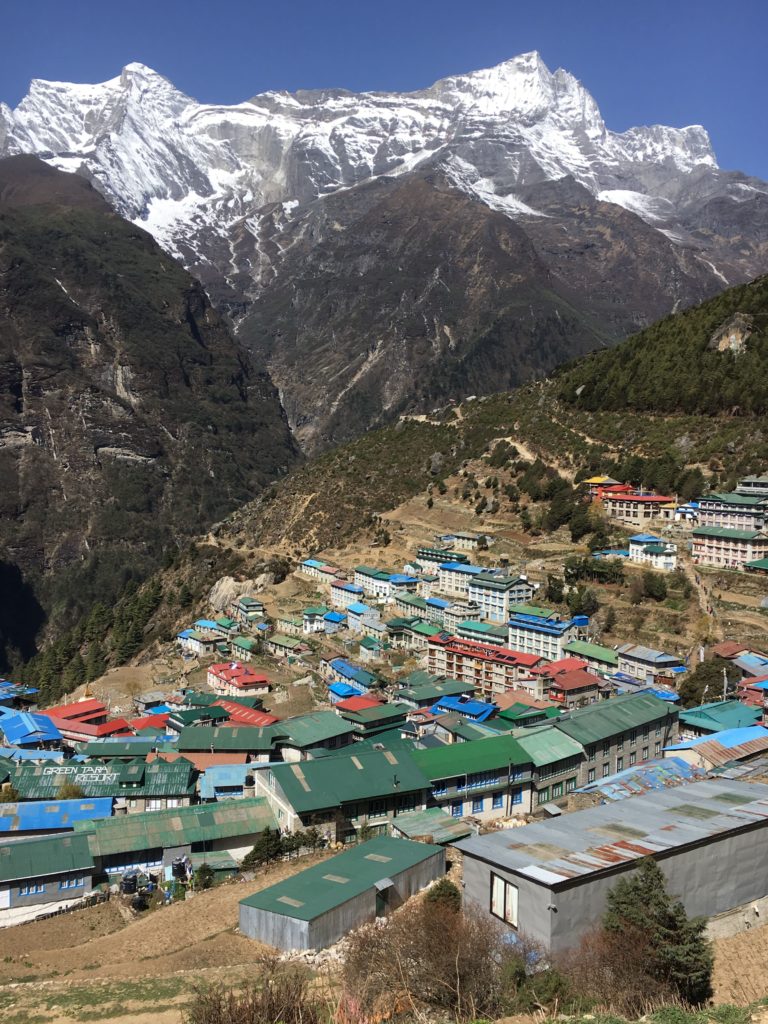
Safety Tips For Hiking Everest Base Camp
8. Symptoms of Altitude Sickness
Ideally you will know before you hike to Everest Base Camp, how your body reacts to high altitude. It’s almost guaranteed that you will feel one or more symptoms of altitude sickness, or acute mountain sickness (AMS) when trekking to Everest Base Camp. The human body is not built to thrive at these 3000m+ altitudes, and you’ll feel it wanting more oxygen.
Symptoms include headaches, lack of appetite, trouble sleeping, blurry vision, nausea, trouble breathing, rapid heart rate, and fatigue. If these symptoms are getting worse or persisting, it’s recommended to take a rest day or descend to a village at lower altitude until your body adjusts.
Note:
This text is for your information only, so you know what to expect before trekking to Everest Base Camp, and should not be relied on for treatment purposes. It is the trekker’s responsibility to research the latest information about altitude sickness and preventatives before heading to the mountains.
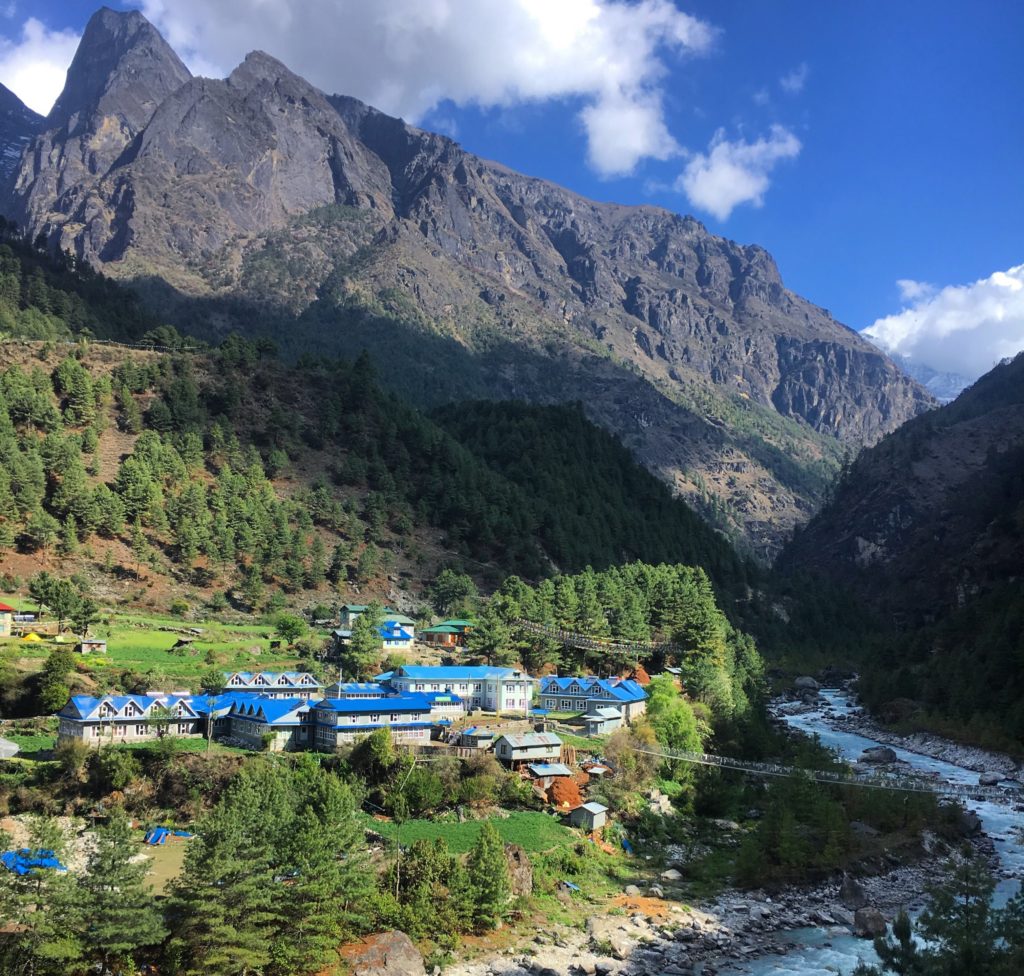
9. How to Prevent Altitude Sickness
The best way to deal with altitude sickness is to mitigate against it in the first place. Take it slow on the ascend, and take rest days in Namche Bazaar or other villages as you make your way up to 5400m. One tip that all hikers know before trekking to Everest Base Camp: expect to spend at least one rest day at Namche Bazaar.
If altitude sickness symptoms listed above are worsening or persisting, stop ascending and take a rest day or two, or descend to a village at lower altitude. EBC will always be there – it’s ok to take it slow so you’re healthy when you get there!
Other Ways to Prevent AMS
- Stay hydrated
- Stay away from alcohol and caffeine which can cause dehydration
- Fuel your body properly by consuming high carb and protein diets at the guesthouses. Almost all guesthouses offer boiled eggs on their menus, eat these up and even pack some to go during breakfast before a day on the trails!
- Follow the golden rule: Hike high and sleep low. Trek over high-altitude summits and passes quickly, then sleep at a lower elevation than what you reached during the day.
Take Diamox – Diamox is a popular medicine to take that prevents symptoms of altitude sickness, if taken properly. Always consult your doctor or a medical professional before starting new medication! Some side effects include frequent urination, tingling in hands, feet, and face, and nausea. I personally did not need to take Diamox, and many people don’t.
Note:
This text is for your information only, so you know what to expect before trekking to Everest Base Camp, and should not be relied on for treatment purposes. It is the trekker’s responsibility to research the latest information about altitude sickness and preventatives before heading to the mountains.
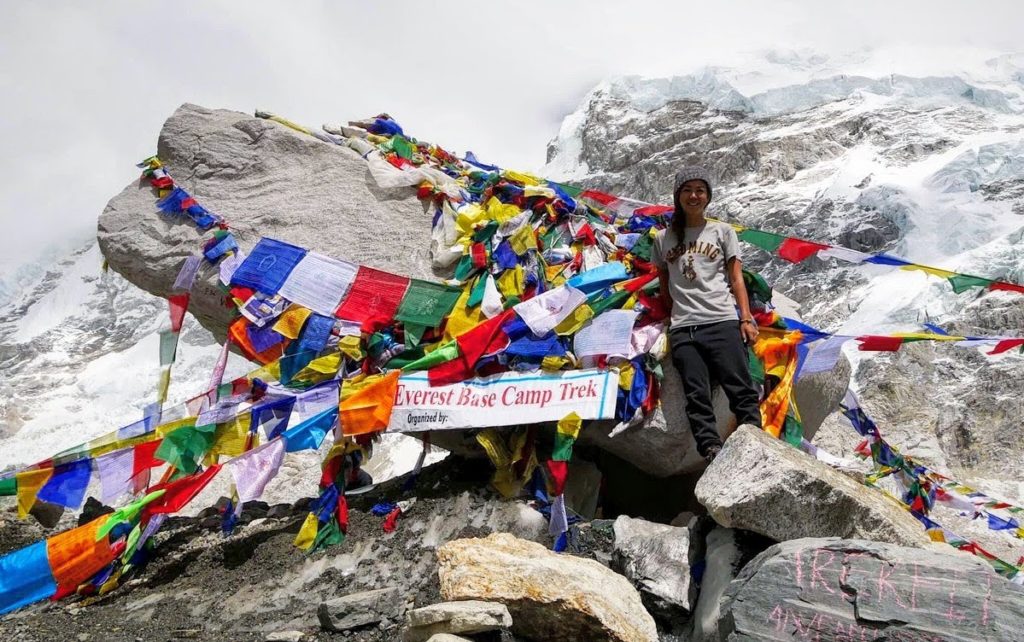
10. Physical Exertion while hiking EBC
The physical difficulty of trekking to Everest Base Camp should not be underestimated. I recommend gaining some experience hiking at altitude before attempting this trek. Everest Base Camp lies at an elevation of 5380m, and the Kala Patthar viewpoint is even higher at 5550m. Gorak Shep, which is the highest elevation village you’ll spend the night in, is at 5140m. It’s no easy feat to get there – your body will be cold and exhausted from the altitude, and you may experience some mental stress as well.
The shortest trekking days are 4-5 km, but at 4000m+ in elevation, uphill, and with an 8-10 kg backpack, it’ll still take a difficult 3-5 hours. That being said, anyone with at least a medium-level of fitness should be able to trek to Everest Base Camp without any serious issues. It’s challenging but that makes the reward so much better! A tip for before you hike Everest Base Camp: get some hiking practice in the mountains, and spend 5-7 hours on your feet walking.
11. Insurance Information
Even while traveling on a budget, one cost I would never skimp out on is travel insurance, ESPECIALLY in the mountains. It’s important to check if your existing insurance will cover up to 5550m in elevation. One thing to know before trekking Everest Base Camp: many insurance providers will have an altitude limit that’s below 4000 or 5000m. You’ll likely need to supplement your existing coverage!
I bought insurance online for cheap, which covers medical evacuations for any altitude level. World Nomads for example, allows you to purchase insurance abroad and covers you for medical evacuations at high altitude.
Budget for Hiking Everest Base Camp
12. How Much Money to Bring With You
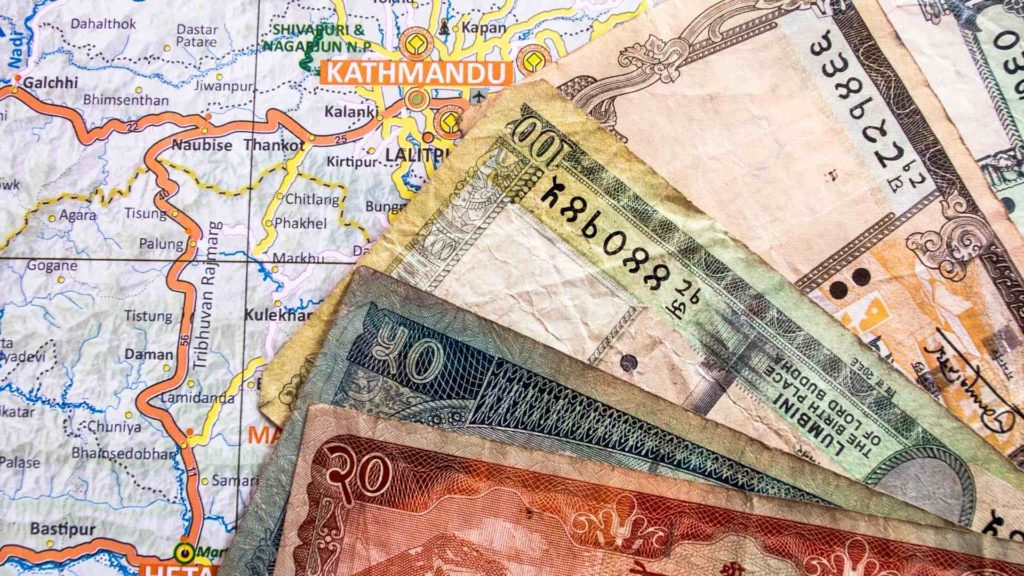
Check out my in-depth budget for trekking the Three Passes Trek!
Hikers will all want to know before hiking Everest Base Camp – how much does it cost? The following are budgets you can set for yourself if you are hiking independently to EBC, without a tour, a local guide, or porter.
Trekkers should budget $23-$30/day for trekking to Everest Base Camp. The range depends mostly on how much you plan to eat and drink, which are the largest budget items on EBC. Multiply this by the number of days you’ll spend in the mountains (~14 for EBC only trekkers, 20+ for Three Passes trekkers). Bring this amount with you in cash from Kathmandu.
During my time trekking in the Everest Region I spent an average of $28/day. My spending includes a couple beers in Namche, lots of snacking on Snickers and Pringles, and buying more than the usual amount of teas, tissue paper, and throat lozenges because I was sick for many days.
Update: Guesthouses across the Everest Region are now charging a standard 500 rupees ($5) per person, which will increase your budget by the same!
13. Cost of Food/Water on the EBC trek
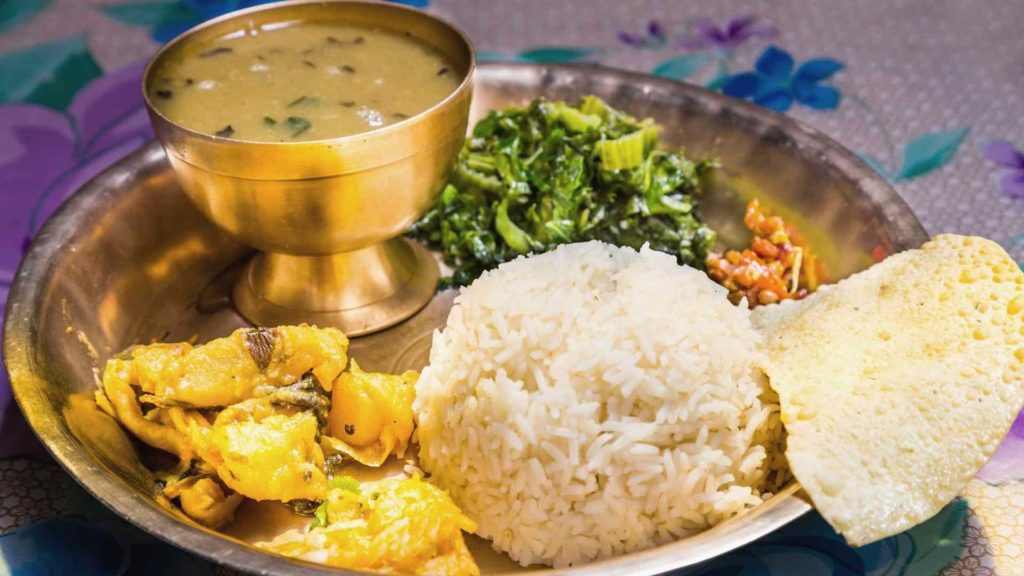
For food, drinks, and snacks I would budget $22-24/day. This is where most of your money on the trek will go.
The cost of food and water increases monumentally as you gain altitude on this trek. Dal Baht, a staple Nepali dinner with refills included of rice and curry, can cost 200 rupees ($2) at low altitude and 850 rupees ($8.50) at high altitude. A nice breakfast of hash browns and vegetables or egg is 400 rupees ($4) at low altitude and goes up to 900 ($9) at high altitude.
A 1-liter water bottle is $1 near Lukla and $4 at Gorak Shep (next to Everest Base Camp). Porters and sherpas are carrying all this with them up to high altitude after all!
14. Cost of Accommodation
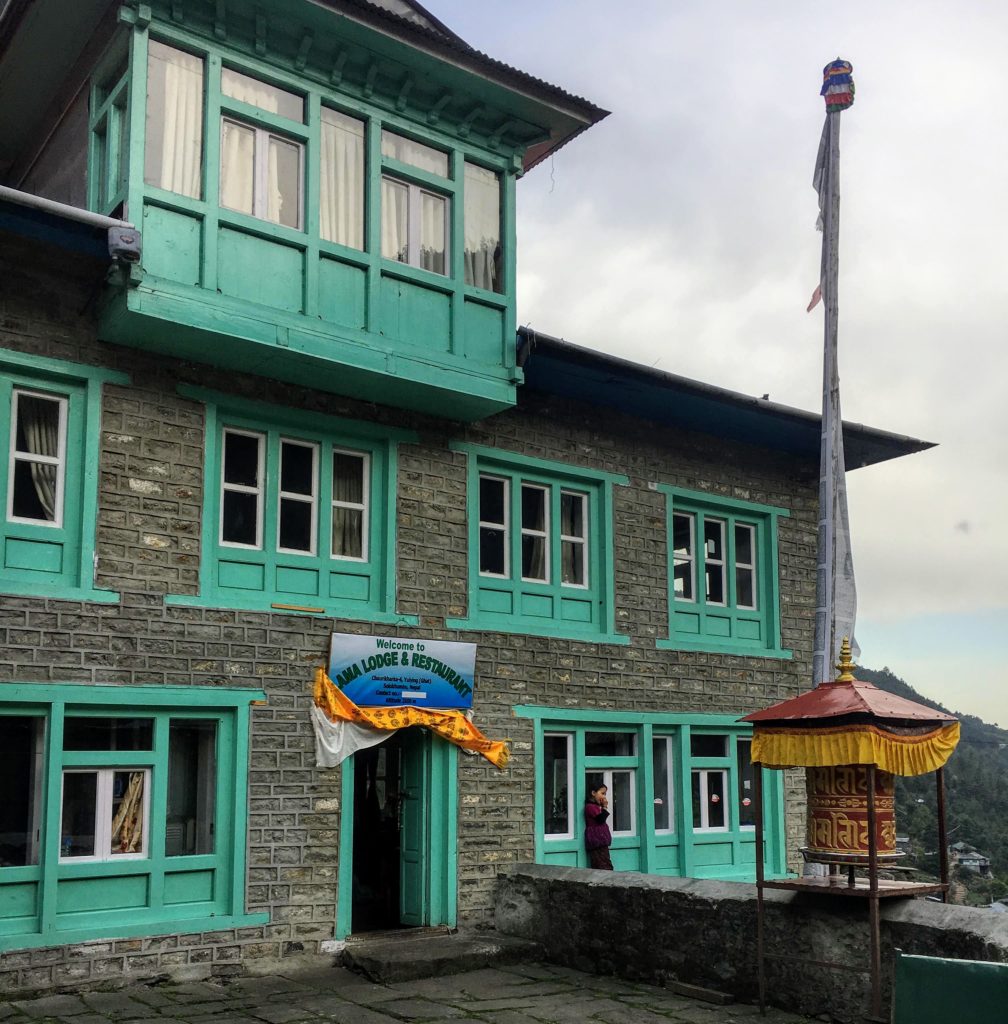
Budget about $2-5 per night for accommodation when trekking. If you’re trying to save money, try staying at more family-owned guesthouses instead of large hotel-like lodges.
Update: Guesthouses across the Everest Region are charging a standard 500 rupees ($5) per person, which will increase your accommodation budget significantly!
Accommodation is traditionally free in the guesthouses in the Himalayas, as long as you eat your meals there. Family-owned lodges will typically stick to this rule of thumb. However, with the commercialization of the Everest region, many new lodges that are larger and have more amenities will charge trekkers for rooms there.
Once you reach a certain altitude, you will need to pay for a room. For example, Lobuche town has a set room price of 500 rupees ($5), and the lodge I stayed at in Gorak Shep (next to Everest Base Camp) charged me 200 rupees ($2).
15. Cost of Wifi

Free WiFi is rare in the Everest Region, unlike the Annapurna region. The largest towns of Namche and Lukla have lodges and restaurants with WiFi, but they may charge $1-$2 per device. Outside of Namche and Lukla, you need to purchase an Everest Link prepaid internet card. These are 600 rupees ($6) for 200 MB of internet. All of the guesthouses have this available for purchase and use.
If you purchase a SIM card in Kathmandu, miraculously in Namche you’ll have 4G service, and in Tengboche, occasional 3G. I purchased a SIM from NCell for 1500 rupees ($15) and it had 10 GB of data on it.
Tip for hiking Everest Base Camp: If you don’t want to invest in these, make sure you tell friends and family that you’ll be without internet for the duration of your trek!!
16. ATM Locations on the EBC hike
The only ATMs along this whole trek are in Namche Bazaar. I was told there are some in Lukla as well, but when I was there and asking around, locals were saying there is only a bank for local account holders.
ATMs in Namche are temperamental and are often out of service due to power outages or simply running out of cash. The ATMs also charge 500 rupees ($5) per withdrawal and have a max withdrawal of 10,000 rupees ($100). Bottom line and something to know before hiking Everest Base Camp – It’s best to bring all the money you plan on spending from Kathmandu!!
Just For Fun Tips for Hiking Everest Base Camp
17. Everest Viewpoints Not To Miss!
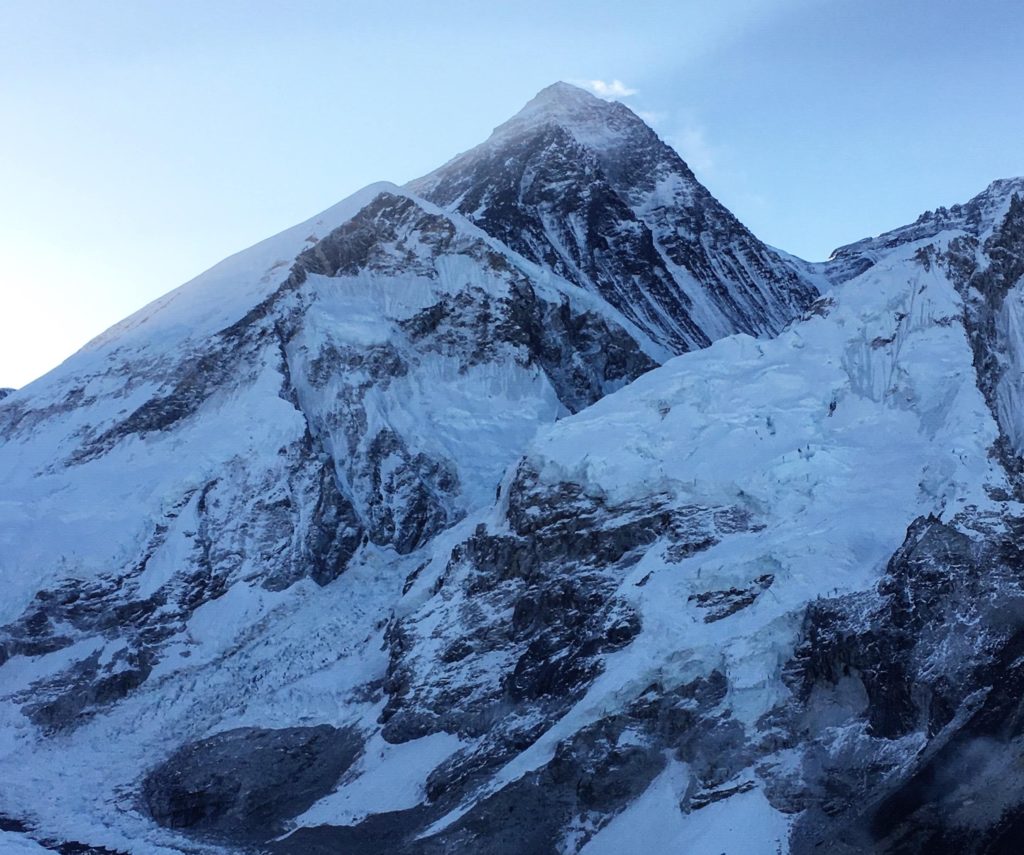
Kala Patthar
Two hours before when the sun is supposed to rise, start hiking to the Kala Patthar summit! It’s important to be at the top of Kala Patthar before the sun comes out, because it comes up behind Everest and will blind you from the great views. Not only is this a stunning viewpoint for Everest, it gives you a 360 degree view of the entire mountain region around you. Tip for hiking Everest Base Camp: Don’t miss Kala Patthar!
Syangboche (North of Namche Bazaar)
If you take a rest day in Namche like recommended, you can do a day-trek up the valley. Here there are a couple lonely lodges, a former monastery, and an amazing view of Ama Dablam mountain and Everest in the back. Ama Dablam and its unique shape steals the show away from Everest, which looks smaller in the distance.
En Route to Tengboche (1-2 km outside of Namche)
Similar to the view from Syangboche, on the trail between Namche and Tengboche is an amazing view of Everest and Ama Dablam. You can tell which mountain Everest is because of the ever-present tuft of snow blowing off of the top of it.
Gokyo Ri
On a side trek from the traditional Everest Base Camp trek is a peak that overlooks Ngozumba glacier and many turquoise lakes. At 5360m, on clear days there’s a view of Everest in the distance as well as the many lakes around it! If you want to add Gokyo Ri to your itinerary, here’s a hiking tip: consider doing the Three Passes Trek, plus Everest Base Camp.
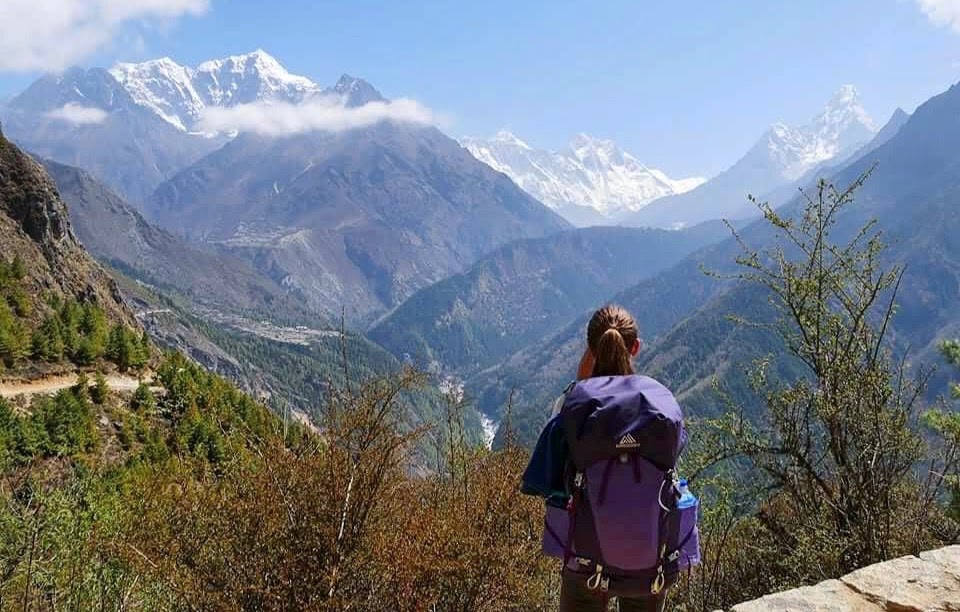
18. Best Bars in Namche Bazaar
I did mention previously to avoid alcohol in order to prevent altitude sickness but… did you know there are two bars in Namche Bazaar? Everyone deserves to let loose after finishing a great EBC trek!
Café Danphe
Café Danphe is my personal favorite with great crowds and bartenders. They showed the Champions League finals match until 3am when I was there in May. The bartenders will remember your drink orders and hang out with you for as long as you’re there. It’s a 24-hour bar, and they really mean it! There’s also free electronics charging upstairs and free WiFi.
World’s Highest Irish Bar
Across the street is an Irish-themed bar that transports you straight to the UK. Televisions all around you are playing sports, and there are lots of couches to rest on. This bar closes around 11pm but serves some great food, and plays some oldies rock and country music. It seems to be a favorite for tour groups to reunite at, and celebrate after making it back from EBC.
Beware! Here’s something to know before hiking Everest Base Camp and letting loose too much: Your alcohol tolerance is lower at high altitude. It’s best to alternate alcoholic drinks with water.
19. Yak Safety
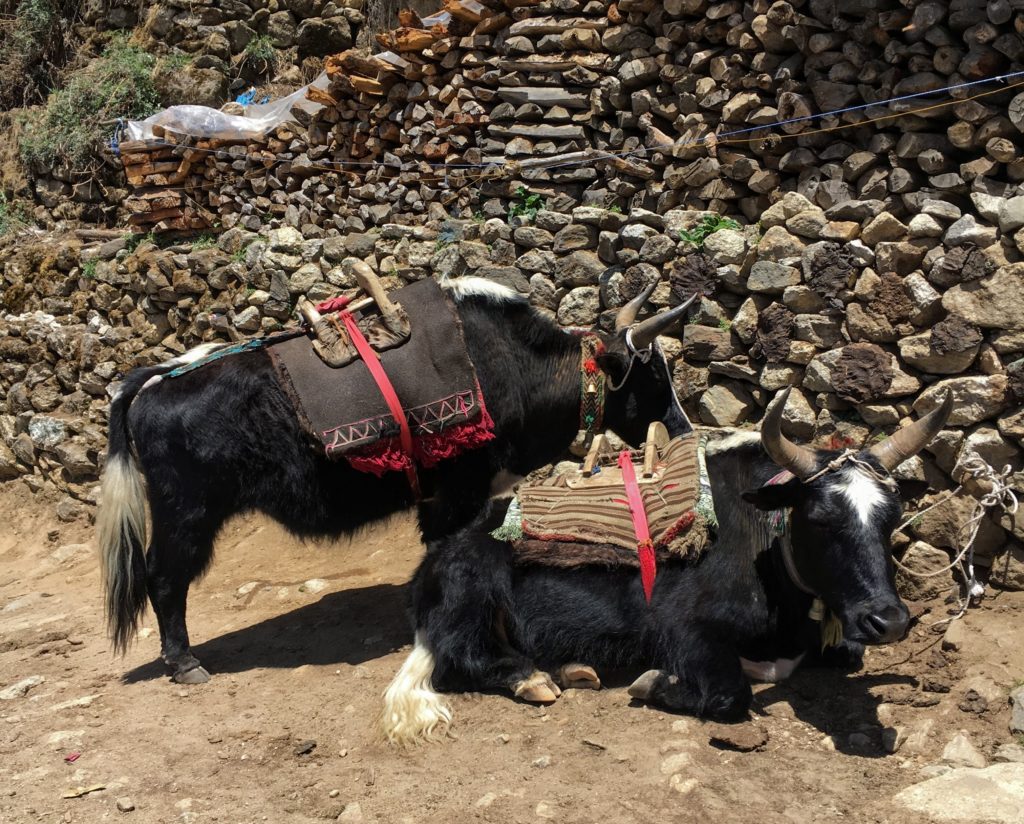
During the trek, especially past Namche Bazaar, you’ll see trains of yaks and yak-cow hybrids called zopkios carrying goods up the mountains. They have massive horns that jut out unevenly, so it’s best not to try and cross a thin suspension bridge when they’re coming toward you. So here’s a tip for hiking Everest Base Camp: Definitely don’t stand between one of them and a cliff’s edge. If they get spooked, they could shake their heads and horns!!
Have patience and let them pass so you don’t end up impaled.
20. Best Side Treks from EBC
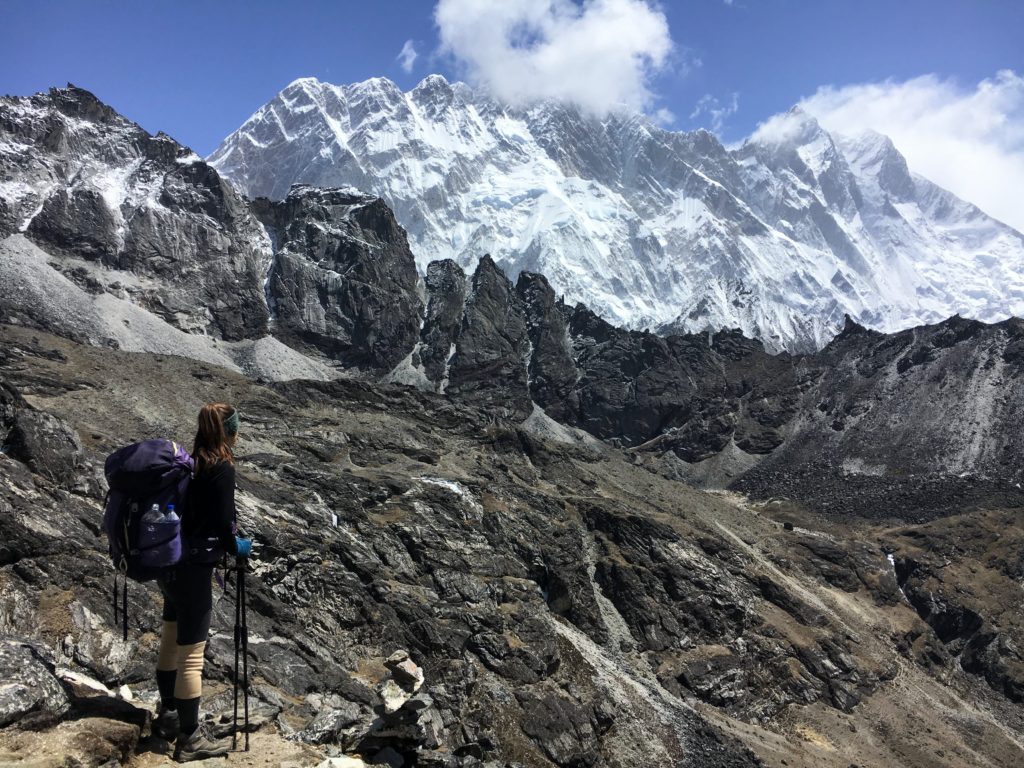
The trek to Everest Base Camp is rewarding, and the views from Kala Patthar are the best in the region. There’s a lot more that Sagarmatha National Park has to offer though!
If you’re up for a challenge – The Three Passes Trek
The Three Passes Trek is a circuit trek that takes you over three 5400m mountain passes, with EBC as a side trek. You cross moon-like terrain and vast, shifting glaciers. Pass days are 12 hours from guesthouse to guesthouse but the views are incredible! Check out the vlog by Intrepid Road about the Three Passes Trek.
If you want to gain more altitude, and REALLY challenge yourself – Island Peak
This is a guided trek that requires a lot heavier gear than EBC, including a tent and proper crampons. This trek goes up to 6189m! It leaves from Chhukhung, a tiny village north east of Dingboche, and takes at least two nights and three days.
If you want more great views – Gokyo & Gokyo Ri
This is the most common side trek from EBC, which requires crossing over a mountain pass, Cho La and its glaciers. Gokyo, a beautiful mountain village next to a large turquoise lake is your destination. Next to Gokyo is Gokyo Ri, a 5360m peak where you can see Everest on clear days! Trekking from EBC to Gokyo creates a little circuit north of Namche, so you’re not seeing the same scenery twice.
One from my to-do list – Ama Dablam Base Camp
A day-trek from the traditional EBC trek, this is a great way to better acclimatize before heading to higher elevation. It takes only a day-trip to get to before you can be back on your way to EBC.
